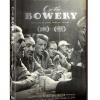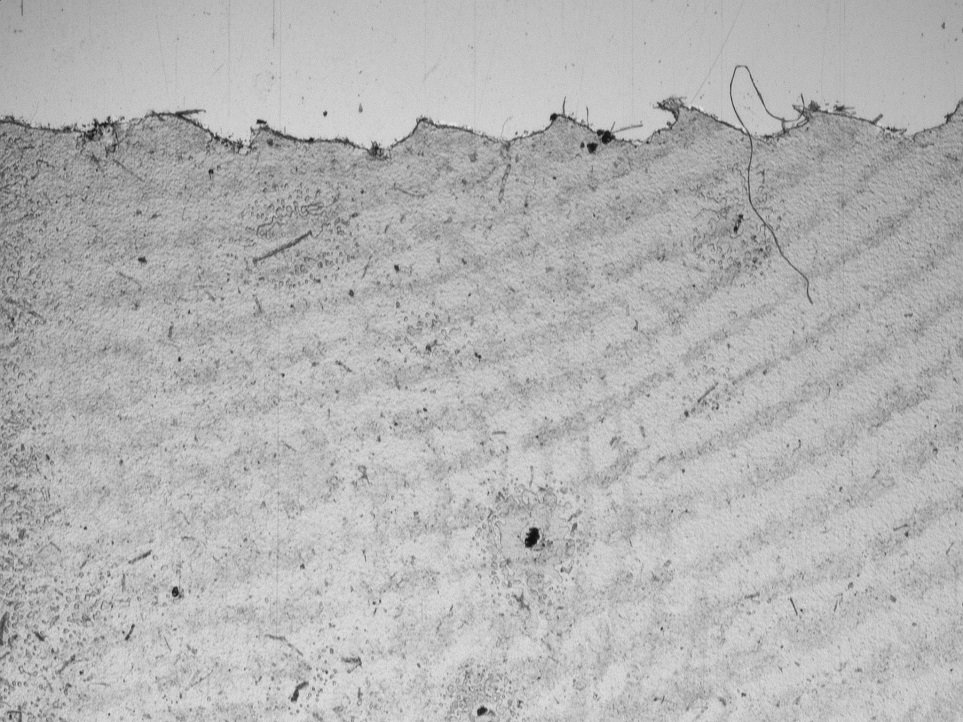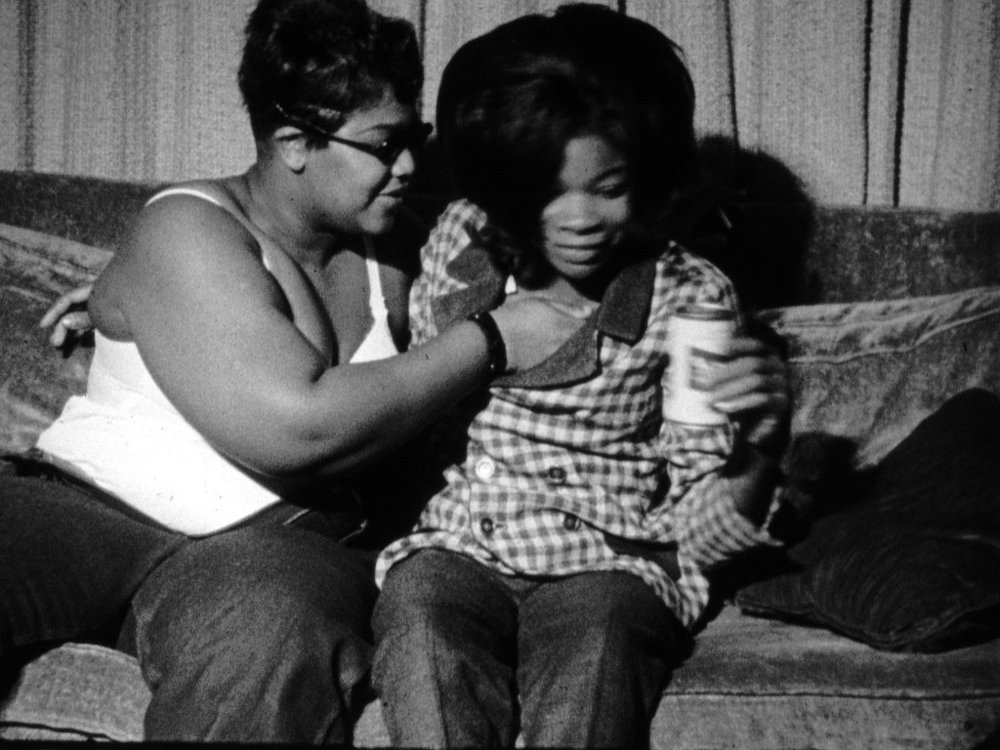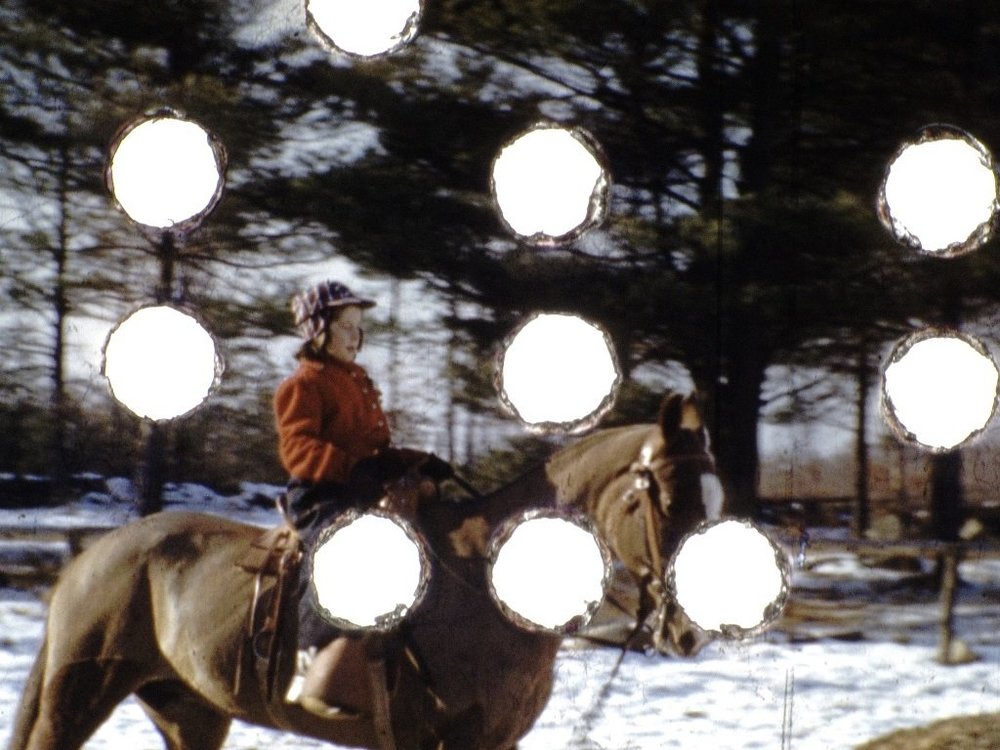-
Posts
2,773 -
Joined
-
Last visited
Everything posted by Daniel D. Teoli Jr.
-

Would love some feedback on my short film.
Daniel D. Teoli Jr. replied to George Scoufaras's topic in Please Critique My Work
Nice film and film work!. Somewhat interesting script. Nice acting. If you wanted to make it more interesting you could have had the argument escalate and someone getting blown away or knifed. But all that stuff has been done before. Hard to do much that has not been done, but it would add something to the dialogue only mix. But it is your film, if you wanted dialogue only, then do it as you like. 'Just talk' reminds me of these guys... I watched it on large screen computer with stereo speakers. Sound was OK for me. (But I didn't listen critically and am no expert. I manage an old film archive and some of the sound films I get there are terrible.) When these critiques come up it would be good to hears costs and time that was required to make the film. Always interested in hearing something of the production costs, lighting and film tests, backstory, problems making, rental issues, etc. Why did you make the film? Practice? Or are you making up a portfolio of work for jobs? What are your goals? Keep at it...you got talent! PS...I like the lighting! But my own work is controversial, so don't go by me.- 15 replies
-
- short film
- 16mm
-
(and 3 more)
Tagged with:
-

Did 1920's home 16mm cams shoot at 24fps?
Daniel D. Teoli Jr. replied to Daniel D. Teoli Jr.'s topic in General Discussion
OK, thanks! (BTW, these were silent films.) It makes sense that they looked poor compared to todays films. Fast action is very jumpy. I think I saved this at 15fps. (I should keep some notes.) I save it all speed options and see what looks the best. Don't know if they offer 16fps on the software. -
I got some old home movies from the 1920's. It looks like the footage is fast and jerky. Did the cheap, home 16mm cams shoot at 24fps back then?
-
OP, just how it is. $$ runs the world, not art. CA was taken down over $$, with cheap illegal labor. Brexit was stopped over $$. Scorsese ruined the end of Taxi Driver, desaturating the blood over $$. Why was Trump stopped from closing down the border to Mexico...that is right $$. England lost the Colonies back in the 1780's over $$...the Stamp Tax. That is one of the big benefits of working underground. You don't care one thing about profit other than do you have the $$ to do a project. Of course, filmmaking is even worse than still photography for sucking down $$. One way or another it always boils down to $$ when doing art. If I could draw I could be in biz with a used napkin and a pencil. And if grandma had balls she would be grandpa. Just gotta suck it up and do the best we can in the world we got.
-

Is it really cheaper to shoot in digital ?
Daniel D. Teoli Jr. replied to panagiotis agapitou's topic in General Discussion
I think this discussion is only for the low budget films. As Tyler brought up, for big $$ films, you can do as you like and film vs digital cost is inconsequential. I think the issue will be as the old timers (film trained) die off, the young guns (digital trained) coming up will have a harder time with film. You can see how it went with 3 strip Technicolor...a lost art. -

The Retroscan does a pretty good job...
Daniel D. Teoli Jr. replied to Daniel D. Teoli Jr.'s topic in Post Production
Here is a scan of a splice detail on a film scanned in TIFF. Single TIFF files are about 3.28mb in 2K 4:3 on the Retroscan. (Although this sample was 4mb.) Click on image to view larger. This was not done as a single image scan, but was taken out of the scan sequence of the film. So it is representational of what you would get when scanning a movie. (Plus I had to reduce it to post on the forum.) I didn't do any special focusing. Maybe it can be done slightly sharper if the film was fine tuned for focus before running. But I think it is a good sample as-is for what the Retroscan can do for sharpness. I hope to give you a rundown of the Lasergate in a few months. As I mentioned previously, the standard Retroscan 16mm gate does poorly with clear edge film. A good portion of the film in my Archive is clear edge. So consider what type of film you will be scanning when buying a Retroscan to get the right configuration. -
In the old days it was a big deal on May 1 https://vintagephotographyddteolijr.wordpress.com/2019/04/23/maypole-may-day-collection/
-
Here Scott, this is a 16mm raw scan, a 2K Retroscan file 1.17MB JPEG 2048 x 1536. I reduced it to 292kb for the forum limits. The Retroscan does not have a film plate to keep the film flat, so maybe 2K will be sharper on another scanner. If you blow it up, the grain is not too sharp. The image falls apart before you can see the grain on the 1.17mb jpeg. From what I can tell, what looks like grain here is more of the texture from the sensor or something like that. I got some flatbed scans of this film and they don't show the grain either and some are 10mb jpegs for 3 or 4 frames. Well Scott, we will have to keep on the trail of the unobtainable scan that can show the grain! But in the future, shoot in BW and you may have an easier time seeing the grain.
-
Well, you gotta do it then and post the results. Get a 2K, 4K, 8K and 10K scan. Then put it up on the Internet Archive. But color film is dye based and the grain is not sharp like BW film. And I don't think a movie film scanner will produce as sharp a scan as a flatbed scanner. But that is another test. Sometimes when I get some time I will compare a 2K Retroscan to a flatbed scan. But right now my computer is a mess, and I'm having trouble replacing it. So it is a test for down the road. Did you go to the link I posted earlier on photography compared? You didn't see any grain in the color film example I posted. It is a hji res flatbed scan and blown up like hell. Color film does not have the grain structure like BW. Here..from the Wiki "In black-and-white photographic film, there is usually one layer of silver halide crystals. When the exposed silver halide grains are developed, the silver halide crystals are converted to metallic silver, which blocks light and appears as the black part of the film negative. Color film has at least three sensitive layers, incorporating different combinations of sensitizing dyes. Typically the blue-sensitive layer is on top, followed by a yellow filter layer to stop any remaining blue light from affecting the layers below. Next comes a green-and-blue sensitive layer, and a red-and-blue sensitive layer, which record the green and red images respectively. During development, the exposed silver halide crystals are converted to metallic silver, just as with black-and-white film. But in a color film, the by-products of the development reaction simultaneously combine with chemicals known as color couplers that are included either in the film itself or in the developer solution to form colored dyes. Because the by-products are created in direct proportion to the amount of exposure and development, the dye clouds formed are also in proportion to the exposure and development. Following development, the silver is converted back to silver halide crystals in the bleach step. It is removed from the film during the process of fixing the image on the film with a solution of ammonium thiosulfate or sodium thiosulfate (hypo or fixer).[3] Fixing leaves behind only the formed color dyes, which combine to make up the colored visible image. Later color films, like Kodacolor II, have as many as 12 emulsion layers,[4] with upwards of 20 different chemicals in each layer." - - - - - - - Scott, I'd tell you to scan a small section of your film on a flatbed scanner to get a reference example of what you can achieve. Then use that to compare your 10K scan to.
-
Sure Perry, no one is suggestion to upscale his movie. The discussion was about getting progressively higher res scans. I thought he wanted hi res scans to project it bigger. My take is even with super hi res scans, 8 can only go so big for projection. With still photos, upscaling can work in some instances combined with sharpening. Upscaling is not as good as hi res scans, but sometimes it makes a more pleasing image to the eye than not upscaling. You got to view the results to see if you like it. If you are pixel peeping then you may not like it, but how does it look to the eye? That is the question. I do lots of upscaling with digital images of still photos. I never saved any before and after examples of it, but will look out for them in the future. The reason I upscale is I cannot always get a good digital original and it may be kinda low res. The upscaling can work to help make a better moderate size print, like a 8 x 10, but the upscaling wont magically make it a low res file to produce sharp 20 x 24's That is how I use upscaling. And it is just like you say with your audio example above. Sometimes the upscaled image does not look as good as the original, so it fails. You just have to try it Perry. And I'm talking about moderate upscaling. When I come across a good example of a upscaling before and after success I will post it for you guys.
-
Forget reasoning. Just run some tests and post the results. If work is done right, proof is in the puddin, not in reasoning. Your scans may be poorly done, even at high res. The scanning companies may just scan things and not try for critical focus. Ask them if they can offer critical focus service. See if that helps the grain pop. I don't know how the $$ scanners work, it may be autofocus, but grain should show up if it is scanned sharply. Some color films seem to have clumpy grain that is different that BW grain. See the link below for photography compared to see color grain vs BW grain. Apples to apples, oranges to oranges...film is less sharp than digital. 35mm negative film = 3 or 4 mp with a P&S cam. (Chromes may be different.) Here are the test photos. http://photographycompared.tumblr.com/ Perceived sharpness on the big screen may be something different. But these are the results with still film.
-
https://www.artsy.net/article/artsy-editorial-rise-fall-internet-art-communities ...what fantastic an article! With ADD, I could only get through a fraction of it. I will have to digest it over a few sittings.
-

Removing black area from scanned 16mm footage
Daniel D. Teoli Jr. replied to Harun Güler's topic in Post Production
Retroscan has a 'clean crop' option for saving film scans. It takes a little crop all around to fine tune the scan from ragged edges. But it wont crop what you got out. You can get a frame by frame TIFF scan and clean up with Lightroom or Photoshop if it is that important to you. They got some crazy film restoration software that may do better, but the cost is astronomical. (from what I can tell.) -

Removing black area from scanned 16mm footage
Daniel D. Teoli Jr. replied to Harun Güler's topic in Post Production
That is heavy duty. Had no idea. -

The Retroscan does a pretty good job...
Daniel D. Teoli Jr. replied to Daniel D. Teoli Jr.'s topic in Post Production
If you are interested in learning about old time film handling here are a series of 16mm film I put up at the Internet Archive. https://archive.org/search.php?query=film handling 16mm teoli&and[]=mediatype%3A"movies" The AV Geeks had one of these projection films. They said they sell DVD's of the film for $10. I contacted then, they said it was a low res DVD and asked what I was using it for. I told them to put in my film archive and to watch. After I told them that, they would not reply to my emails and would not sell me a copy. Worked out OK for me. I got 6 projection films for next to nothing. ….F the Geeks. -

The Retroscan does a pretty good job...
Daniel D. Teoli Jr. replied to Daniel D. Teoli Jr.'s topic in Post Production
Here are a few additional Retroscan tidbits. I scanned another 16mm film in JPG - BW 379 feet at 2048 x1536. (That is the max res for 4:3) The file size was 17.5 GB for 15,160 JPG files and took about 21 minutes to convert into single image files once it was scanned. (Maybe faster with better hardware. I got a $300 Walmart Computer.) The compressed AVI file for the 379 feet JPG scan was 7.05 GB. I don't know if it would have been any different in TIFF. I will have to do a TIFF scan sometimes to see what it produces. I expect it to be about 4 times bigger in space than JPG. I need to get more storage worked out. The Retroscan can scan in compressed and uncompressed AVI and QuickTime MOV in 4:3 and 16:9 JPEG, BMP, PNG and TIFF. So far just ran a few reels in JPG. I will have to see what it all means by testing different options. The specs on the Retroscan say 8BG RAM. My computer has 4GB RAM and seems to work OK. But have not tried giant reels and all the other scanning options as yet. I have not scanned any 8mm, will give it a try down the road. -

Notre Dame…Vintage Salt and Albumen Prints
Daniel D. Teoli Jr. replied to Daniel D. Teoli Jr.'s topic in Off Topic
Thanks. I don't read much, so didn't know. I just like looking at photos, but you don't always get the backstory details in the photos. A photo project in Paris put in a call for Notre Dame photos for a weekend photo spread. They said they got 1500 photos and used about 100. They used 3 of the 8 I sent in. Here are the links. https://loeildelaphotographie.com/en/notre-dame-de-paris-the-classics-bb https://loeildelaphotographie.com/en/notre-dame-de-paris-black-white/ https://loeildelaphotographie.com/en/notre-dame-de-paris-colors-bb/ https://loeildelaphotographie.com/en/notre-dame-de-paris-interior https://loeildelaphotographie.com/en/notre-dame-de-paris-from-the-top-bb https://loeildelaphotographie.com/en/notre-dame-de-paris-la-seine-bb/ https://loeildelaphotographie.com/en/notre-dame-de-paris-the-night-bb/ A few are terrible, as far as low res garbage. I wonder what the rejects looked like? I hate low res images online. Sometimes unavoidable, but it better have some special importance to use low res crap. -
I scanned a 16mm test roll on a Retroscan. Here is the video. After putting on YT it only looks so-so. Scanner produces more sharpness than you can get on YT. Although I don't know much about this, just learning the ropes. Maybe there are some tricks and coughing up some $$ to YT. Vimeo looked worse than YT, so I took it down. I don't like to sign my name to poop. This is all raw scans. No post processing. This is a frame from the end where the film was punched. (Kodachrome is 1941 vintage.) I didn't do any single frame focusing. Just ran the film through from an earlier test film. Then had to reduce it to put on the forum. I was surprised at the sharpness of the holes. Not flatbed scan quality, but still better than I thought I'd get from this unit. The scanner does not do clear edge film good. Had tons of trouble with clear edge film. Very jumpy. You have to buy a more $$ lasergate to read clear film. Hopefully get one in a few months. The camera sensor also had some artifacts that show up when you scan white leader. They don't show on images. Dirt on the sensor. But not from me, just how it came out of the factory shop. Disappointing. I like that it can export single file TIFF or JPG. If you got some interesting documentary / underground / historical / stag 16mm that you want scanned I will scan for free...but you share digital files with my archives. I have to like the film and it has to be short. 400 to 800 foot reels. (I got ADD and get bored scanning this stuff.) I prefer silent films. I would have to run sound films through a projector to capture the sound then marry to the film. I prefer not to run other people's films through the projector. But if it is something of interest I may do sound, but narrated sound only. I have some interesting narrated 'art student' films from the 40's. Girl goes in the woods, strips down, etc. The films say they are for art students only. I will work on one of those soon to see about the sound. Write direct if you want free scans...but Google my name and see my work first. Do you think your film will fit my likes? I don't mind home movies if they are interesting and time capsule material. And no harm in running them by me. You pay shipping both ways, other than that scans are free. If you want single image TIFF then you supply a hardrive or flash drive. Film is fascinating stuff! w1000w@aol.com
-

Notre Dame…Vintage Salt and Albumen Prints
Daniel D. Teoli Jr. replied to Daniel D. Teoli Jr.'s topic in Off Topic
Yes, don't know the date. Think they built the spire late 1800's. Didn't know they added the window. -
Daniel D. Teoli Jr. Archival Collection The Getty Museum Uncategorized albumen print
-
He makes a good case for it. I've tried bare drives with varied results. I gave up on them for now. . . . . . . . . . . . . . . . . Bare drives are safe for storage FALSE! Those caddies for drives were made for technicians to easily mount drives and to clone and dupe several drives at a time. However, I’m seeing them pop up more and more on editor’s desks. Ways to destroy drives This is crazy! Bare drives are not floppy disks. You can destroy the drives in many ways. You can shock it, drop it, get it dirty, and wear the connector. The first issue, scariest, most damaging and easiest to do is, ESD or electrostatic discharge. And don’t tell me you ground yourself before every touch. Maybe you ground yourself before you remove it from the bag, but then you move about the room, you roll your desk chair, you pick up static. And for the record, just touching metal isn’t good enough, you have to touch grounded metal, so the metal legs of your desk ain’t going to do it. The second is a no-brainer, you can drop it. Now maybe you’re saying, “but I can drop an enclosed drive too!” Yes, but even the most basic of drive enclosures have some form of shock buffer and if they don’t then you should not trust your sensitive data on those either. The most overlooked is finger oils. Touching the circuit board of a drive with your bare hands is going to transfer oil to it. This oil can break down the drive’s components, but more likely will become a bonding agent for dust buildup that will insulate components and cause them to eventually heat up and fail. In addition, your finger oils can create electrical connections between components. Lastly, that hard drive connector was never made to withstand many inserts. It was meant to be connected a few times. It’s not USB. The more you use it, the more it wears, the cheaper the drive, the fewer times it can be connected. “But Vince, we always have another backup.” This one is laughable. How long will it take for you to access that backup? I’ve been to facilities where that backup bare drive is safely stored offsite and a cut need to go out tonight. You’ve just shocked your bare drive and now you have to spend a few hours of time retrieving the backup. A team of AE’s editors and producers are on the clock for those few hours of retrieval. Now I know you’re saying “bare drives are cheap and convenient, and I don’t have to keep all those power supplies around.” So you’re going to start acting like a technician and stand on an antistatic mat, with an ESD wrist strap and wear ESD gloves. Plus you’ll keep isopropyl alcohol on hand just in case. But even if you did that, drives out of enclosures are still more susceptible to vibration and the drives little vent holes are more likely to attract dust and dirt. That’s right enclosures have vibration dampening and obviously provide a further barrier to dirt. Bottom line, handling a bare drive is akin to Russian roulette. https://5thingsseries.com/post-myths-vol-2/
-
Very creative stuff! https://www.artsy.net/article/artsy-editorial-lost-strange-dizzying-websites-contemporary-artists (May take some time to load the animated photos.)







